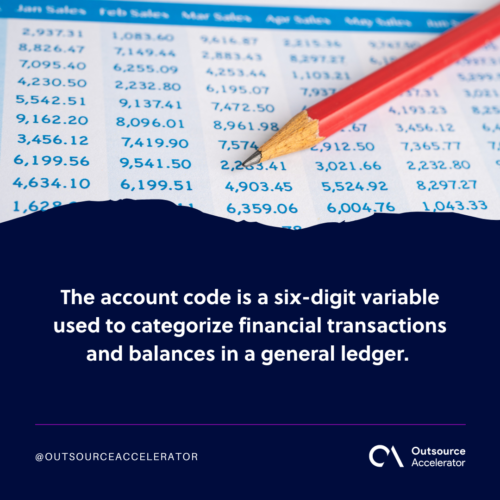Account code
Definition
What is an account code?
The account code is a six-digit variable used to categorize financial transactions and balances in a general ledger. The account code on the general ledger specifies which balance sheet either an asset or liability the transaction affects.
On the other hand, the account code on the operational ledger specifies the type of profit, expense, or transfer that is being recorded.
According to the University of Florida, the first number of the account specifies whether it is a balance sheet or income statement item.

1XXXXX – Assets
Cash, investments, accounts receivable, inventories, and capital assets are examples of general ledger account codes from 111000 to 199000.
2XXXXX – Liabilities
Account codes in the general ledger range from 211000 to 299000. Accounts payable, payroll liabilities, unearned income, and long-term liabilities are among the account codes.
4XXXXX – Operating revenues
Student tuition and fees, grants and contracts, sales and services, interest income are all recorded under account codes ranging from 411120 to 491270.
5XXXXX – Non-operating revenues
State appropriations, interest income and cancellations, administrative overhead, and other non-operating revenues are all included in the account codes ranging from 521000 to 579999.
6XXXXX – Operating expenses – payroll
Account codes in the general ledger range from 611000 to 699999. All personnel expenditures are recorded using these account codes.
7XXXXX – Operating expenses – Non-payroll
Contractual services, utilities, materials and supplies, repairs and maintenance, travel, and capital asset acquisitions are all recorded using account codes from 711100 to 799950 in the general ledger.
8XXXXX – Non-operating expenses
Account numbers in the general ledger range from 811100 to 899999 hold non-operating costs such as administrative overhead, transfers, and payments to long-term debt.







 Independent
Independent




